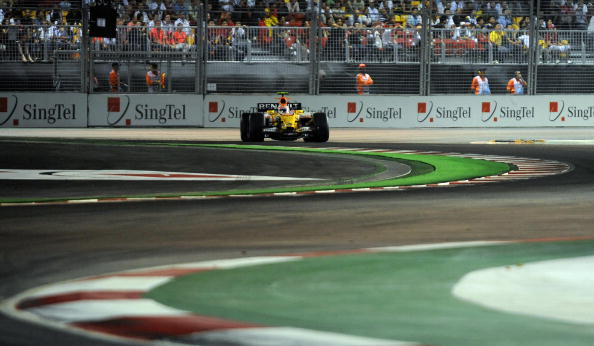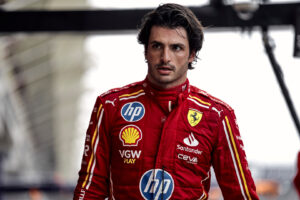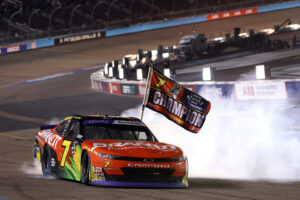We take a look back at Singapore’s F1 debut in 2008. A race where the phrase “take one for the team” had never been more apt.
I think it’s safe to say that the Singapore Grand Prix has never been the most terribly exciting race on the Formula 1 calendar. Perhaps it peaked at the first instalment back in 2008.
The Debut Under the Lights
Going into the race – a history-maker as the first night race in F1 history – Lewis Hamilton held a narrow one-point advantage over Felipe Massa. The title race had been close, with defending World Champion Kimi Raikkonen’s challenge fading as they arrived in Singapore. Massa took Pole Position with a blistering lap, six-tenths-of-a-second ahead of Hamilton in 2nd.
Massa led Hamilton at the start and it wasn’t long before both pulled well clear of Raikkonen, with Massa three seconds ahead of Hamilton. On lap 12, the Renault of Fernando Alonso pitted for tyres, switching to super-softs and a refuel, re-joining the race in last. Just two laps later, team-mate Nelson Piquet Jnr crashed at turn 17, bringing out the Safety Car. Many drivers chose to pit during this period, including Massa. His Ferrari pit crew released him too soon, with Massa exiting with the fuel hose still attached. Stopping at the pitlane exit, the pit crew gave chase to release the hose, sending him back out again, his race compromised. Nico Rosberg now led in his Williams with Alonso’s early stop now enabling him to jump into 5th.
Alonso was able to jump into the lead on lap 45 and built-up enough of an advantage to pit again and still rejoin leading. The Spaniard would hold on to take victory by just under three seconds from Rosberg, with Hamilton 3rd, inching six points clear of Massa who finished well out of the points. It was Alonso’s first F1 win after his acrimonious exit from McLaren at the end of the previous year after what had been a hard year since returning to Renault.
Piquet comes clean
It had, of course, seemed a prophetic coincidence that the crash of one Renault led to the victory of the other, but within a year, Piquet blew open one of the sport’s most infamous scandals.
After general underperformance, especially compared to Alonso, Piquet was fired by Renault boss Flavio Briatore mid-season in 2009. Understandably jilted by the decision, Piquet made two statements to the FIA after they began investigating the incident, prompted by allegations that were made by Brazilian TV station Rede Globo. After one of Piquet’s statements had been revealed, Renault stated their intention to take both Piquet Snr and Jnr to court, citing blackmail to keep Piquet in the seat.
Over the next few days, many reports surfaced, with some suggesting that Renault’s Technical Director, Pay Symonds, was apparently offered immunity by the FIA in return for information. It was alleged that Symonds had tried to pin the plan on Piquet before The Times published transcripts of radio communications during the race. One day later, Renault dropped the case and all intention of contesting the FIA’s charges of breaching the rules, with Briatore and Symonds resigning.
Alonso Escapes A Penalty
The case went ahead, with Renault being handed a suspended two-year suspension. Briatore was handed an indefinite ban from all forms of participation in FIA-governed motor racing and Symonds was given five years after having confessed. Alonso was cleared of any wrongdoing and involvement in the arrangement. Briatore and Symonds managed to overturn the ban with an appeal, receiving 15,000 and 5,000 Euros respectively.
Briatore has not returned in any capacity other than managing the interests of drivers, whereas Symonds currently acts as Formula 1’s official Chief Technical Officer after spells with Virgin Racing and Williams. Many pundits felt Piquet should have received some punishment for his role in the incident, but subsequently, not one F1 team ever hired him afterwards.
F1 returns to the Singapore Grand Prix on Sunday.






